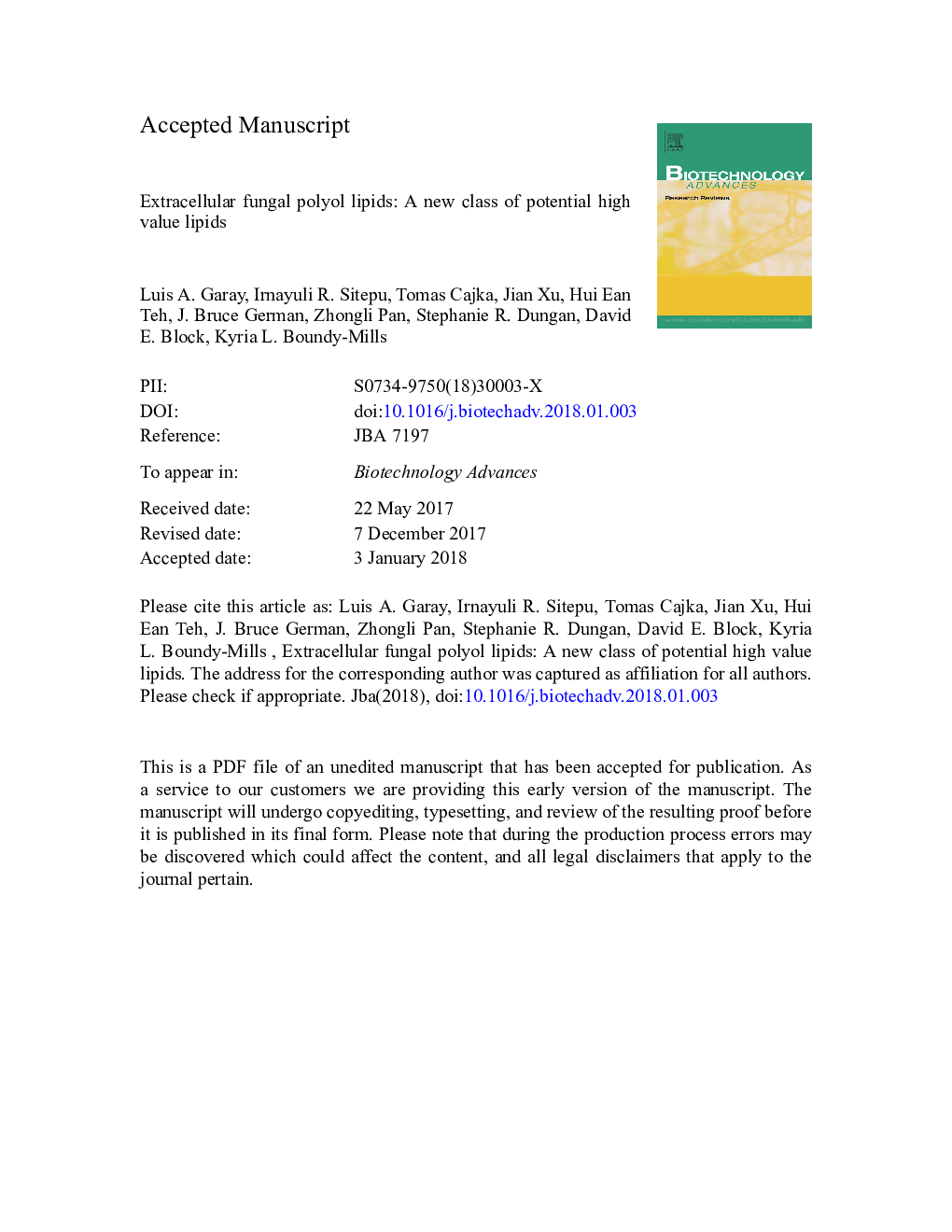| Article ID | Journal | Published Year | Pages | File Type |
|---|---|---|---|---|
| 6486654 | Biotechnology Advances | 2018 | 39 Pages |
Abstract
Extracellular fungal glycolipid biosurfactants have attracted attention because productivities can be high, cheap substrates can be used, the molecules are secreted into the medium and the downstream processing is relatively simple. Three classes of extracellular fungal glycolipid biosurfactants have provided most of the scientific advances in this area, namely sophorolipids, mannosylerythritol lipids and cellobioselipids. Polyol lipids, a fourth class of extracellular fungal glycolipid biosurfactants, comprise two groups of molecules: liamocins produced by the yeast-like fungus Aureobasidium pullulans, and polyol esters of fatty acids, produced by some Rhodotorula yeast species. Both are amphiphilic, surface active molecules with potential for commercial development as surfactants for industrial and household applications. The current knowledge of polyol lipids highlights an emerging group of extracellular fungal glycolipid biosurfactants and provides a perspective of what next steps are needed to harness the benefits and applications of this novel group of molecules.
Keywords
Related Topics
Physical Sciences and Engineering
Chemical Engineering
Bioengineering
Authors
Luis A. Garay, Irnayuli R. Sitepu, Tomas Cajka, Jian Xu, Hui Ean Teh, J. Bruce German, Zhongli Pan, Stephanie R. Dungan, David E. Block, Kyria L. Boundy-Mills,
